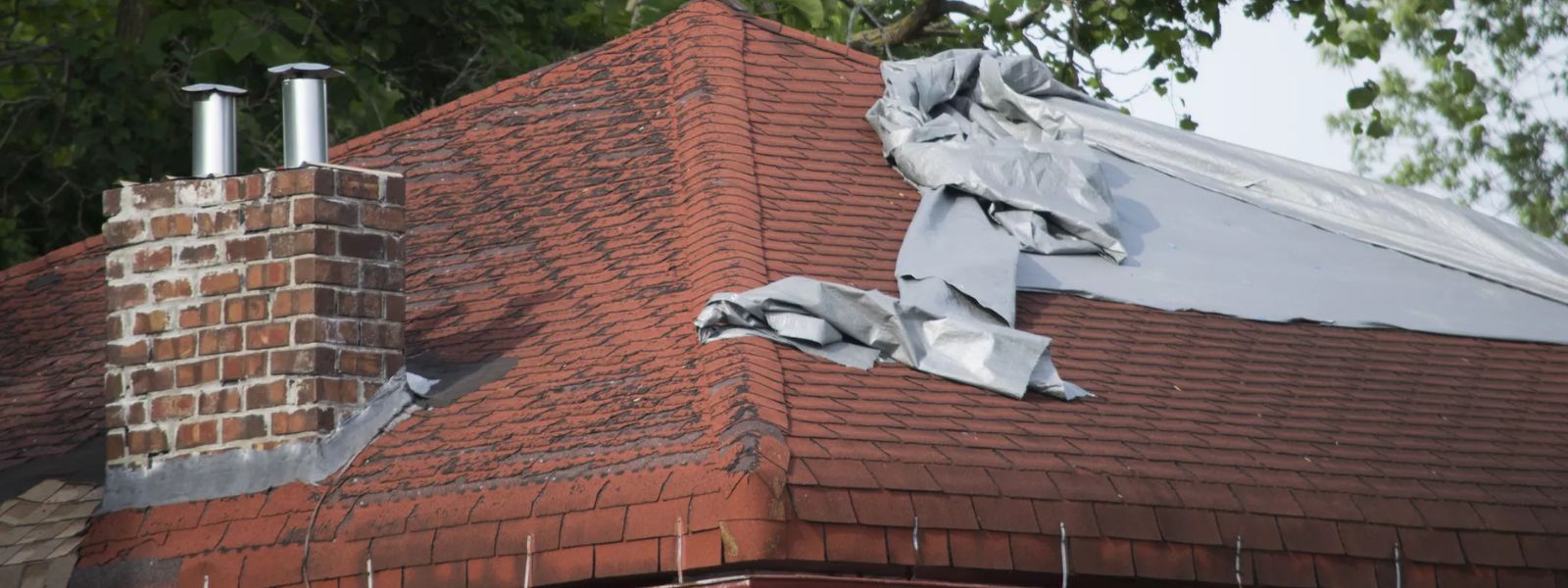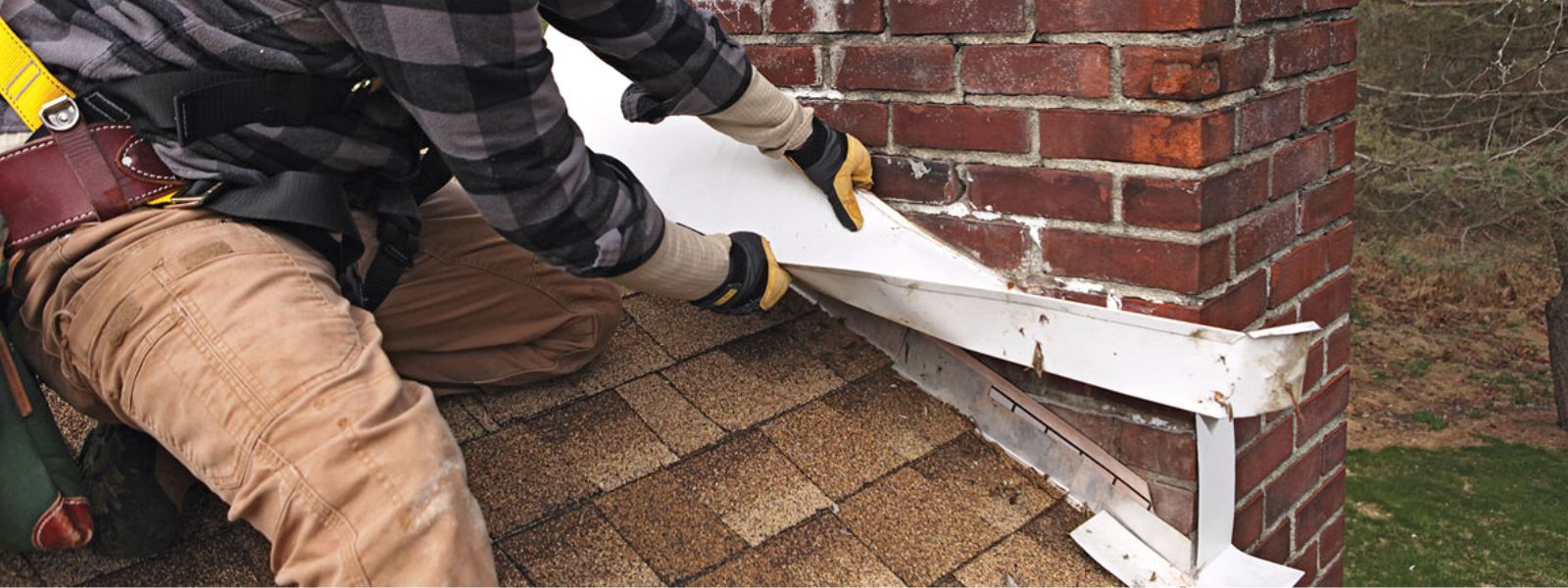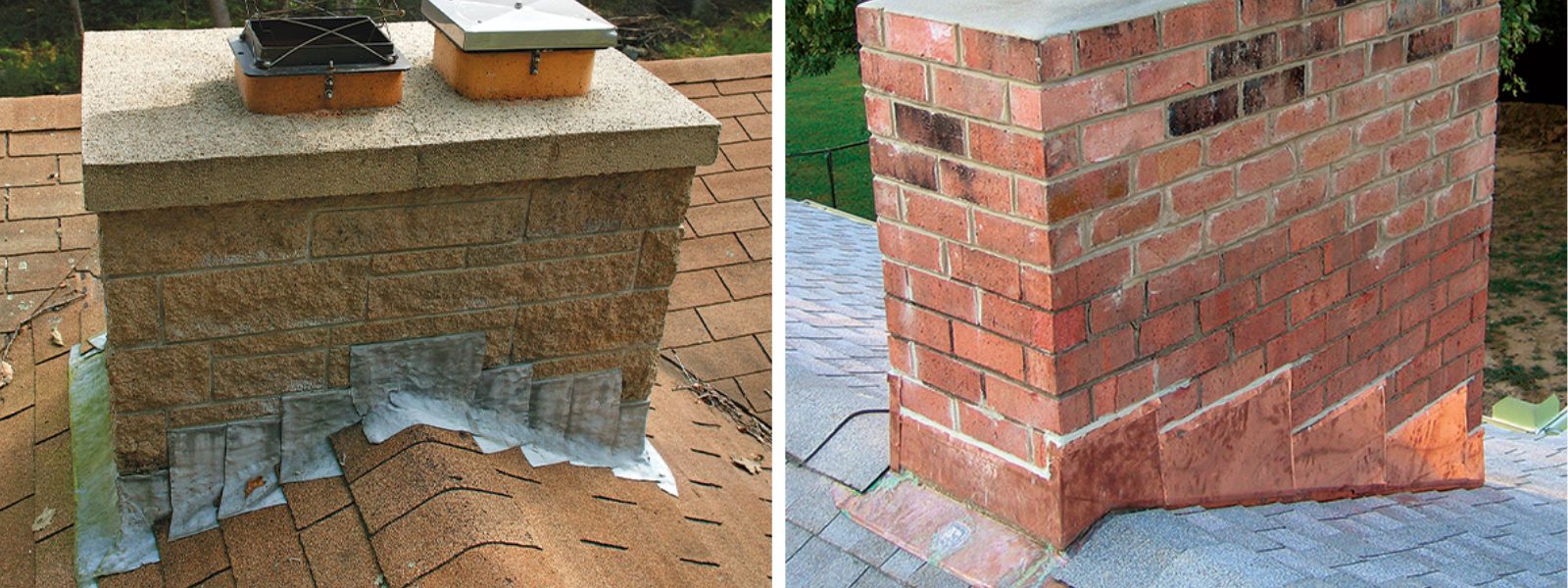Is Your Chimney Prepared for Spring Storms? Look Out for These Telltale Signs of Damage

Introduction
As we transition into the spring season, it’s essential to make sure your chimney is prepared for the unpredictable storms that often accompany this time of year. From heavy rain to high winds, these conditions can put your chimney at risk of damage. But how can you tell if your chimney has been affected? In this article, we will explore the telltale signs of chimney damage that you should be on the lookout for.
One common indicator of chimney damage is cracks or gaps in the chimney structure. These can occur due to the expansion and contraction of the materials used in construction, as well as exposure to the elements. Another sign to watch out for is water infiltration, which can lead to interior damage, including rusted dampers and stained walls. Additionally, loose or missing bricks, as well as leaning or tilting chimneys, are red flags that shouldn’t be ignored.
By identifying these signs of damage early on, you can take the necessary steps to have your chimney repaired and ready for spring storms. Stay tuned as we discuss each sign in detail and provide expert tips for ensuring your chimney remains safe and functional throughout the season.
Importance of chimney maintenance
Chimneys play a crucial role in keeping our homes warm and cozy during the colder months. However, they are also exposed to various elements, including rain, snow, and strong winds. Neglecting chimney maintenance can lead to serious problems and compromise the safety of your home. Regular inspection and maintenance can help identify any issues early on, preventing them from escalating into more significant and costly repairs.
Common causes of chimney damage
Before diving into the signs of chimney damage, it’s important to understand the common causes behind it. One of the most prevalent causes is the expansion and contraction of materials used in chimney construction. Over time, this can lead to cracks and gaps, allowing water to enter and cause further damage. Exposure to extreme weather conditions, such as heavy rain and strong winds, also contributes to chimney deterioration. Additionally, poor construction, lack of maintenance, and animal infestations can all lead to chimney damage.
Signs of chimney damage
Cracked or deteriorating mortar
One of the first signs of chimney damage to look out for is cracked or deteriorating mortar. Mortar is the substance that holds the bricks or stones of your chimney together. Over time, exposure to heat, cold, and moisture can cause the mortar to weaken and deteriorate. This can result in visible cracks or gaps between the bricks or stones. If left unaddressed, these cracks can expand, compromising the structural integrity of your chimney.
To check for mortar damage, visually inspect the exterior of your chimney. Look for any cracks or gaps in the mortar joints. You can also use a small tool, like a screwdriver, to gently probe the mortar. If it crumbles or feels soft, it may be a sign of deteriorating mortar. It’s important to address this issue promptly to prevent further damage and potential safety hazards.
Leaking chimney
Water infiltration is a common problem that can cause significant damage to your chimney. When water enters your chimney, it can lead to various issues, including rusted dampers, stained walls, and deteriorating chimney components. Signs of a leaking chimney may include water stains on the walls or ceiling near the chimney, a musty odor, or visible water pooling in the fireplace or chimney.
If you suspect a leaking chimney, it’s crucial to identify the source of the leak. Common areas prone to leaks include the chimney cap, crown, flashing, and chimney liner. Addressing the source of the leak promptly is essential to prevent further water damage and potential structural issues. A professional chimney inspection can help pinpoint the cause of the leak and provide recommendations for repairs.
Damaged or missing chimney cap
The chimney cap is an essential component that sits on top of your chimney. It serves as a protective barrier, preventing water, debris, and animals from entering the chimney flue. If your chimney cap is damaged or missing, it can lead to several problems. Water can freely enter the chimney, causing damage to the interior components. Additionally, without a cap, animals may find their way into your chimney, creating blockages and potential safety hazards.
Inspect your chimney cap for any signs of damage, such as cracks, rust, or missing parts. Ensure it is securely attached to the chimney and fits snugly. If you notice any issues with your chimney cap, it’s best to replace it promptly to protect your chimney from further damage.
Chimney crown issues
The chimney crown is the cement or mortar layer that covers the top of your chimney. It acts as a protective barrier, preventing water from seeping into the chimney structure. However, over time, the chimney crown can crack or deteriorate due to exposure to the elements. This can allow water to enter the chimney, leading to interior damage and structural issues.
Inspect your chimney crown for any visible cracks or signs of deterioration. Pay attention to the edges and ensure it is properly sloped to allow water to drain away from the chimney. If you notice any issues with your chimney crown, it’s important to have it repaired or replaced to prevent further damage.
Chimney flashing problems
Chimney flashing is the metal strip or sheet that seals the joint between your chimney and the roof. It prevents water from entering the roof and chimney intersection. However, flashing can become damaged or deteriorate over time, leading to water leaks and potential structural issues.
Check your chimney flashing for any signs of damage, such as rust, cracks, or gaps. Ensure it is securely attached and properly sealed. If you notice any issues with your chimney flashing, it’s important to have it repaired or replaced to maintain the integrity of your chimney and prevent water damage.
Chimney liner damage
The chimney liner is a protective layer that lines the interior of your chimney flue. It helps contain the byproducts of combustion and protects the chimney structure from heat and corrosion. Over time, chimney liners can become damaged, leading to a variety of issues, including increased risk of fire, reduced efficiency, and potential structural damage.
Inspect your chimney liner for any signs of damage, such as cracks, gaps, or deterioration. If you notice any issues with your chimney liner, it’s crucial to have it repaired or replaced by a professional. A damaged chimney liner can compromise the safety and efficiency of your chimney.
Cracked or Deteriorating Mortar
One of the most common indicators of chimney damage is cracked or deteriorating mortar. The mortar acts as the binding agent that holds the bricks together, providing stability and strength to the chimney structure. Over time, however, the mortar can become weakened due to weather exposure, age, or poor construction.
Cracks in the mortar can occur due to the expansion and contraction of the materials used in construction, as well as exposure to the elements. These cracks can allow moisture to seep into the chimney, leading to further damage and potentially compromising the structural integrity of the chimney.
To check for cracked or deteriorating mortar, carefully inspect the exterior of your chimney. Look for any visible cracks or gaps between the bricks. You may also notice small pieces of mortar crumbling or falling out. If you discover any signs of mortar damage, it is essential to address it promptly to prevent further deterioration.
The best way to repair cracked or deteriorating mortar is through a process called tuckpointing. Tuckpointing involves removing the damaged mortar and replacing it with fresh mortar. This not only strengthens the chimney but also improves its appearance. It is recommended to hire a professional chimney repair specialist to ensure a proper and long-lasting repair.
Leaking Chimney
Another significant sign of chimney damage is water infiltration. While chimneys are designed to withstand rain and moisture, prolonged exposure can lead to water penetration and subsequent interior damage. If left unaddressed, water infiltration can cause significant structural issues and compromise the safety of your chimney.
One of the first signs of a leaking chimney is stained walls or ceilings near the chimney area. These stains are often indicative of water seeping through the chimney and entering your home. Additionally, you may notice a musty odor or dampness in the vicinity of the chimney, suggesting moisture accumulation.
To identify the source of the leak, it is crucial to inspect both the interior and exterior of the chimney. Start by examining the chimney cap, which is designed to prevent water from entering the chimney. Look for any cracks, gaps, or missing pieces in the cap. Damaged or missing chimney caps should be replaced to ensure proper protection against water infiltration.
Next, check the chimney flashing, which is the metal strip that seals the joint between the chimney and the roof. Over time, flashing can deteriorate or become loose, allowing water to seep through. Inspect the flashing for any signs of damage, such as rust or gaps. If necessary, repair or replace the flashing to maintain a watertight seal.
If you suspect a leaking chimney, it is advisable to consult a professional chimney specialist. They can conduct a thorough inspection, identify the source of the leak, and recommend the appropriate repairs. It is crucial to address chimney leaks promptly to prevent further damage and mitigate potential safety hazards.
Damaged or Missing Chimney Cap
The chimney cap plays a vital role in protecting your chimney from various elements, including rain, snow, debris, and animals. It is a metal or masonry structure that sits on top of the chimney, covering the flue opening. Without a properly functioning chimney cap, your chimney becomes vulnerable to damage and potential hazards.
One of the most noticeable signs of a damaged or missing chimney cap is the presence of debris such as leaves, twigs, or animal nests inside the chimney. This suggests that the cap is either damaged or absent, allowing unwanted materials to enter the chimney and obstruct the flue. Additionally, a damaged chimney cap may exhibit visible cracks, rust, or even be completely detached from the chimney structure.
A damaged or missing chimney cap should be addressed promptly to prevent further damage and protect your chimney from the elements. If the cap is merely damaged, it may be possible to repair it by replacing any broken parts or reinforcing the structure. However, if the cap is missing or severely damaged, a complete replacement may be necessary.
When selecting a new chimney cap, ensure that it is made of high-quality materials that can withstand weather exposure. Consider choosing a cap with mesh screening to prevent animals from entering the chimney. It is recommended to consult a professional chimney technician for guidance on selecting and installing the appropriate chimney cap for your specific needs.
Chimney Crown Issues
The chimney crown is the concrete or masonry slab that sits on top of the chimney, sealing the chimney from the flue liner to the edge of the chimney. It acts as a protective barrier against water and other elements. However, over time, the chimney crown can deteriorate due to exposure to weather conditions, such as freeze-thaw cycles.
One of the telltale signs of chimney crown damage is the presence of cracks or visible deterioration. The crown may also have an uneven surface, indicating potential weakness. These issues can allow water to seep into the chimney, leading to further damage and potential structural issues.
To inspect the chimney crown, carefully climb onto the roof or use binoculars from the ground to get a closer look. Look for any visible cracks or signs of deterioration. Pay close attention to the edges of the crown, as this is where cracks are most likely to develop.
If you notice any signs of chimney crown damage, it is essential to address it promptly to prevent further deterioration. Repairing chimney crown issues typically involves applying a waterproof sealant or a crown coat to reinforce the existing structure. In more severe cases, a complete crown replacement may be necessary.
It is important to note that chimney crown repairs and replacements should be performed by a professional chimney specialist. They have the expertise and knowledge to ensure that the crown is properly repaired or replaced, providing long-lasting protection for your chimney.
Chimney Flashing Problems
Chimney flashing is a metal strip that seals the joint between the chimney and the roof, preventing water from entering the structure. Over time, flashing can deteriorate due to weather exposure, resulting in water infiltration and potential damage to the chimney and surrounding areas.
One of the common signs of chimney flashing problems is water stains or visible water damage on the ceiling or walls near the chimney. You may also notice dampness or a musty odor in the vicinity of the chimney. These signs indicate that water is seeping through the flashing and entering your home.
To inspect the chimney flashing, carefully climb onto the roof or use binoculars from the ground for a closer look. Look for any signs of damage, such as rust, gaps, or loose flashing. Pay close attention to the flashing around the chimney edges and where it intersects with the roof.
If you identify any issues with the chimney flashing, it is crucial to address them promptly to prevent further damage and potential structural issues. Repairing chimney flashing problems typically involves sealing any gaps or replacing damaged flashing with new materials. It is recommended to consult a professional chimney technician for this task, as they have the necessary expertise to ensure a proper and watertight seal.
Conclusion
As spring brings unpredictable storms, it is important to ensure that your chimney is prepared to withstand the elements. By identifying the telltale signs of chimney damage, such as cracked mortar, water infiltration, damaged chimney caps, chimney crown issues, and flashing problems, you can take the necessary steps to have your chimney repaired and ready for spring storms.
Regular chimney inspections and maintenance are crucial to preventing extensive damage and protecting your home and family. It is advisable to consult a professional chimney specialist who can conduct a thorough inspection, identify any signs of damage, and recommend the appropriate repairs or replacements.
Remember, chimney damage should never be ignored, as it can lead to potential safety hazards and costly repairs. By addressing chimney issues promptly, you can ensure that your chimney remains safe, functional, and ready to withstand the spring storms that lie ahead. So, take the time to inspect your chimney and prioritize its maintenance to enjoy a worry-free spring




Your point of view caught my eye and was very interesting. Thanks. I have a question for you.